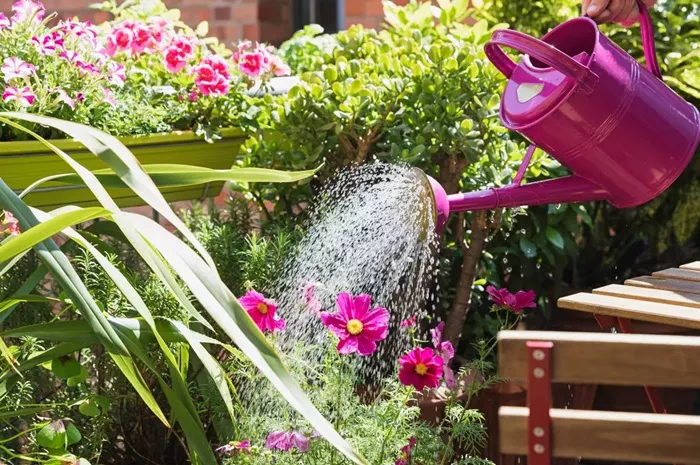As the UK prepares for a sweltering double-plume blast from the Continent, with temperatures expected to reach up to 30ºC in the coming days, gardeners are being advised to ensure their pot plants remain well-watered. Despite appearances, even on wet days, potted plants may not receive sufficient water due to the “canopy” effect of leaves, which can direct rainwater away. This issue is particularly critical during the expected thunderstorms following the hot days.
Simon, a horticulture expert from the popular gardening channel Walking Talking Gardeners, has shared a valuable tip to prevent pot plants from drying out. He advises that container-grown plants should be watered consistently, regardless of recent rainfall, but this becomes doubly crucial during a heatwave.
Simon explains that plants, like humans, regulate their temperature by releasing moisture through stomatal pores, which are found under the leaf and occasionally on top. In hot, dry conditions, plants will “sweat” through these pores to cool down. At temperatures around 40ºC, many plants could face fatal stress, prompting them to activate self-protection mechanisms.
“The plant will release moisture through the stomatal pores, as we do through our sweat pores, to cool themselves down so that the temperature of the plant doesn’t exceed 40 or 42 degrees,” Simon explains. “If it does, you get denaturation of the enzymes, and the plant will die.” For this reason, he emphasizes that on very warm days, even if it’s windy, container plants should be watered at least once a day, and even twice a day if it’s particularly hot.
However, overwatering can also be harmful, potentially causing root rot, leaf discoloration, and stunted growth. Very wet soil can also create an environment conducive to mold and fungus growth, further harming the plant. So, how do you know when a plant needs watering?
The first method is to simply insert a finger into the soil and feel whether it is dry. However, this may not provide a good insight into the moisture levels deeper down among the plant’s roots. Simon suggests a more reliable “genius” test, which was used by old-school gardeners in the 19th and 20th centuries when stone pots or terracotta pots were prevalent.
“If you tap a terracotta pot with an appropriate stick, it will make a ringing sound if it is dry,” Simon explains. “If it is fully watered, it will produce a dull thud. By tapping the pot, you can tell whether it requires watering or not.”
Simon adds with a touch of pride that this is a display of some “old-school skill.”


